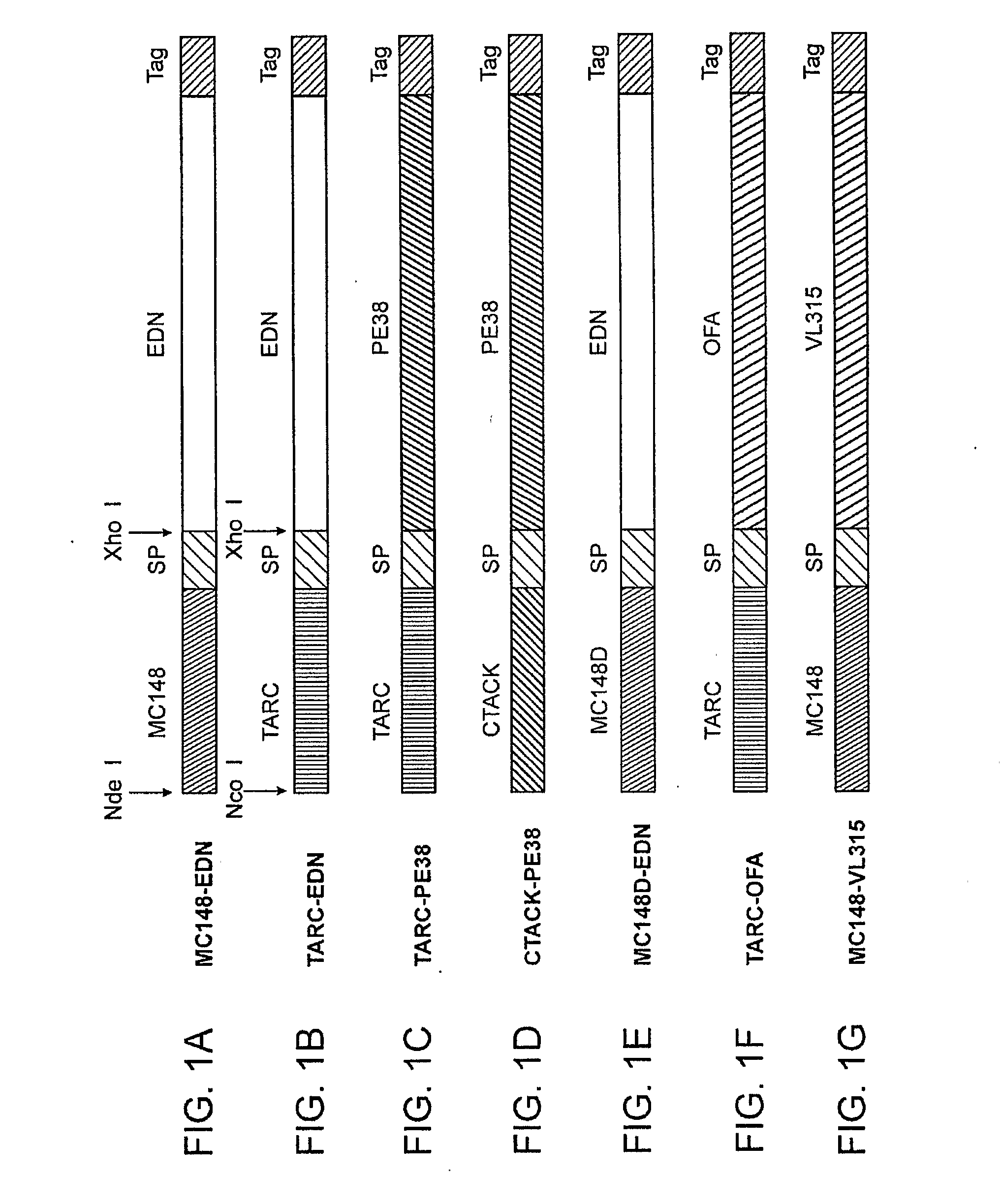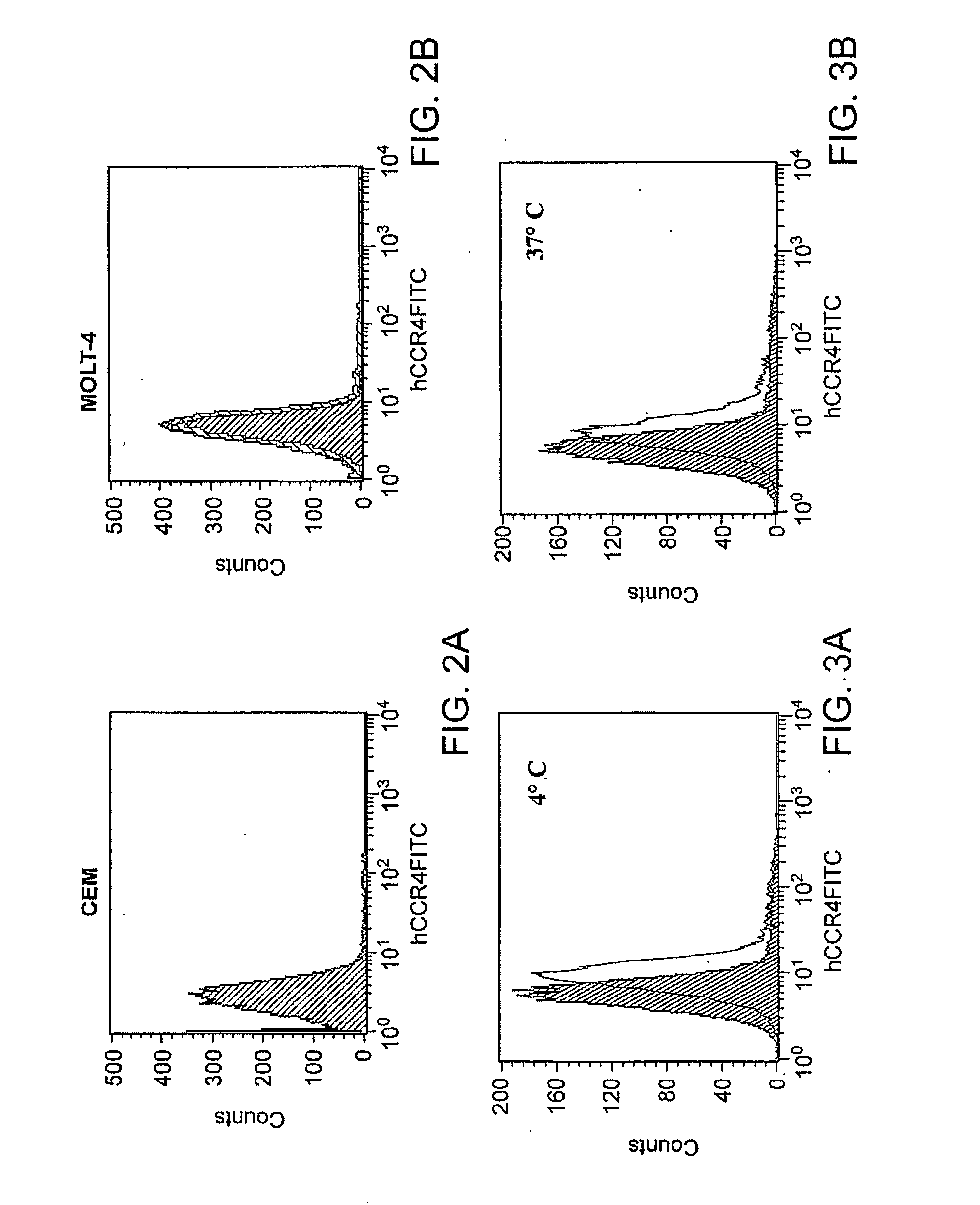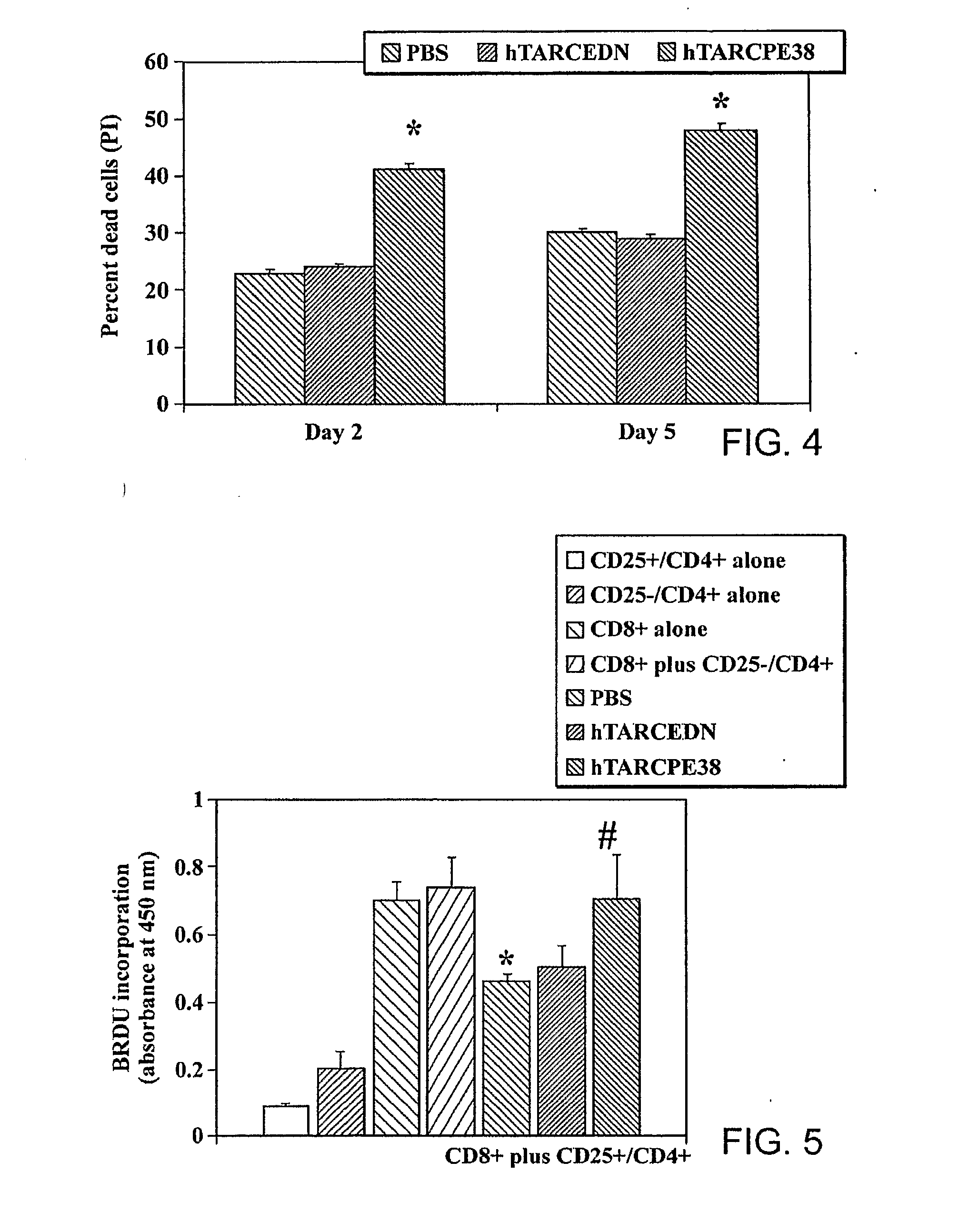Methods and Compositions for Modulating Immune Tolerance
a technology of immune tolerance and composition, applied in the field of methods and compositions for modulating immune tolerance, can solve the problems of autoimmune diseases, molecular mechanisms by which regulatory t cells exert suppressor/regulatory activity, and have not been definitively characterized. to achieve the effect of reducing the size of the tumor
- Summary
- Abstract
- Description
- Claims
- Application Information
AI Technical Summary
Benefits of technology
Problems solved by technology
Method used
Image
Examples
example 1
Chemokine Fusion Proteins Kill Tumor Cells
[0152]Chemokine fusion proteins have been constructed with following toxic moieties (i) EDN, a human pancreatic RNase, eosonophil-derived neurotoxin, a member of the pancreatic RNase superfamily, previously shown to be potent cytotoxins for tumor cells after antibody targeting; (ii) human angiogenin, a member of the ribonuclease (RNase); or (iii) a truncated form of Pseudomonas exotoxin (PE38). The chemokines utilized in the fusion constructs were selected based on their ability to target CCR4 (TARC / CCL17 and MDC / CCL22) and CCR8 (1-309 / CCL1, vMIP-I and MC148). Thus, chemotoxin proteins (MC148-EDN, mMJP3α-EDN, TARC-EDN and TARC-PE38) or control EDN fusion with mutant MC148 (MC148D-EDN), which can not bind CCR8, or TARC fused with tumor antigen OFA-iLRP (TARC-OFA) were constructed and produced at a high degree of purity (>95%). Angiogenin was excluded from further considerations due to its non-specific killing activity. Chemokine fusion did no...
example 2
Toxins Delivered Via Chemokine Receptors, Chemotoxins, Specifically Kill Tumor Cells
[0156]Cell Lines and Mice. Human acute T-lymphoblastic leukemia cell lines CCRF-CEM (CCL-119, CEM), and MOLT-4 (CRL-1582), and human embryonic kidney 293 cells (HEK-293) were purchased from ATCC (Manassas, Va.). HEK-293 cells stably transfected with human CCR8 (HEK / CCR8) were a gift from Dr. Zack Howard (Science Applications International Corporation, Frederick, Md.). HEK-293 cells were cultured in Dulbecco's modified Eagle's medium (Invitrogen Corporation, Carlsbad, Calif.) containing 10% fetal bovine serum (FBS). The same medium but with 400 μg / ml of G418 (Sigma-Aldrich, Inc., Saint Louis, Mo.) was used to maintain HEK / CCR8 cells. CEM and MOLT-4 cells were cultured in a standard RPMI medium 1640 (Invitrogen Corporation) supplemented with 10% FBS. Female 6-8 weeks old NOD / LtSz-scid / scid (NOD / SCID) mice were purchased from The Jackson Laboratory (Bar Harbor, Me.) and kept under pathogen-free conditio...
example 3
Human Peripheral Blood T Regulatory Cells, Functionally Mature CCR4+Tregs and Immature-Type CCR4−Tregs, Regulate Effector T Cells
[0174]Regulatory CD4+ T cells (Tregs) are emerging as key controllers of peripheral tolerance to self- and allo-antigens. Their dysfunction leads to the spontaneous onset of autoimmune disorders or suppression of immune responses associated with a poor disease outcome in patients with a variety of malignancies. Characterization of Tregs has been complicated by the lack of unique markers, although Tregs are primarily defined as CD4+ T cells that express CD25 (IL-2Rα), CTL-associated antigen 4 (CTLA-4) and scurfin, a fork-head box P3 (FoxP3) gene product. These genes are expressed at a constitutively high level and suppress the proliferation of activated T cells and dendritic cells. To date, at least two subsets of human natural Tregs, memory-type CD25+CD4+ Tregs and natural naïve CD4+Tregs (nnTregs), are known to exist. In addition, a separate group of IL-1...
PUM
| Property | Measurement | Unit |
|---|---|---|
| Area | aaaaa | aaaaa |
| Immunogenicity | aaaaa | aaaaa |
Abstract
Description
Claims
Application Information
 Login to View More
Login to View More - R&D
- Intellectual Property
- Life Sciences
- Materials
- Tech Scout
- Unparalleled Data Quality
- Higher Quality Content
- 60% Fewer Hallucinations
Browse by: Latest US Patents, China's latest patents, Technical Efficacy Thesaurus, Application Domain, Technology Topic, Popular Technical Reports.
© 2025 PatSnap. All rights reserved.Legal|Privacy policy|Modern Slavery Act Transparency Statement|Sitemap|About US| Contact US: help@patsnap.com



